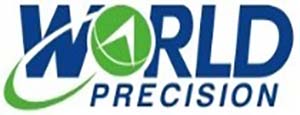
As I stepped into the bustling hall of a recent robotics and automation exhibition, I was immediately struck by the energy in the air. Innovators from around the globe gathered to showcase their cutting-edge technologies, each booth brimming with excitement about what lies ahead. But amidst all this innovation, an intriguing question lingered: how do these advancements intersect with legal regulations? This thought sparked my curiosity as I navigated through displays of autonomous robots and automated systems.
What Makes Robotics and Automation Exhibitions Unique in Terms of Legal Frameworks?

The robotics and automation exhibition is not just a platform for showcasing technological marvels; it also serves as a critical junction where law meets innovation. The unique characteristics of these exhibitions lie in their ability to highlight compliance with existing laws while paving the way for new regulatory frameworks. For instance, discussions on intellectual property rights are prevalent here, particularly concerning trademarks that protect brand identities within this rapidly evolving industry.
How Do Machine Tool Exhibitions Influence Trademarks Within Robotics?
Diving deeper into machine tool exhibitions reveals fascinating insights regarding trademarks specific to robotics technology. These events often feature companies that specialize in precision machinery essential for manufacturing robotic components. Here, trademark protection becomes vital as businesses strive to differentiate themselves in a competitive market filled with similar products. The emphasis on branding ensures that innovations are recognized legally while fostering trust among consumers who rely on quality assurance.
What Are ITES’s Trademark Characteristics That Impact Robotics?
The Information Technology Enabled Services (ITES) sector plays an equally significant role when discussing trademarks related to robotics and automation. Companies operating within ITES frequently collaborate with robotic firms to enhance service delivery through automation solutions. Consequently, protecting proprietary software or algorithms via trademark registration has become crucial for maintaining competitive advantage—ensuring that innovative ideas remain safeguarded against infringement.
Can We Conclude That Robotics and Automation Exhibitions Are Pivotal for Trademark Development?
In conclusion, it’s clear that robotics and automation exhibitions serve not only as showcases for groundbreaking technologies but also as platforms where legal considerations take center stage—especially concerning trademarks. As we witness rapid advancements in this field, understanding how legal frameworks adapt will be essential for innovators looking to secure their place in history while navigating complex regulatory landscapes.

